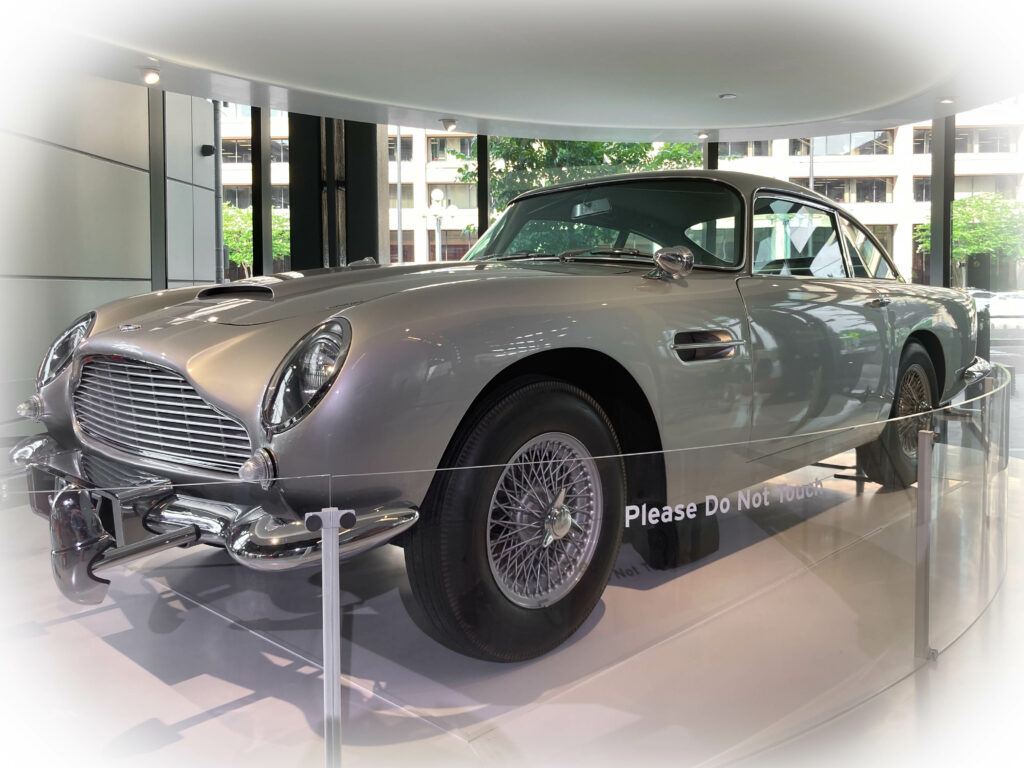From an Aston Martin DB5 like James Bond’s to the ice axe used to kill Leon Trotsky, the International Spy Museum in Washington, D.C., features the largest collection of espionage artifacts on public display.
It’s the only museum in America dedicated to espionage and its place in history. In a city filled with fabulous museums, it’s one of the most popular. It’s also one of the most fun, because it’s super-interactive. Visitors memorize their secret spy personas and then test their espionage skills at different games throughout the Museum.
Approximately 600,000 people visit the Museum annually. I went most recently with some family members visiting from out of town. Here’s what to expect:
Briefing Center
You and your fellow “agents” ride an elevator up to the fifth floor. There you’ll learn your secret spy identity and some basic backstory details like your alter ego’s home city and occupation. And you’ll receive the Undercover Mission badge you’ll use to play the interactive exhibits. There’s also a short introductory film about espionage.
Stealing Secrets
In this gallery, visitors learn about spies and other people involved in espionage from the past and the present. The “Spies and Spymasters” exhibit brings to life six stories of historic figures, including Revolutionary War slave-turned-spy James Armistead Lafayette. The gallery also teaches about the gadgets spies use, inventions used to intercept messages and conduct surveillance in places where agents can’t go, and the people who’ve developed them.
Making Sense of Secrets
This gallery teaches the different ways, like codes and ciphers, that people have tried to hide the real meaning of messages throughout history and how analysts put together and interpret pieces of information and turn them into valuable intelligence. In the “Decision Room”, you and your team recreate an exercise that the CIA used to find Osama bin Laden.
Covert Action
In this gallery, visitors learn about the techniques used to influence world events — and the ways they can go wrong. It covers everything from propaganda to assassination. Here you can see the ice axe that Ramon Mercader, an assassin sent by Joseph Stalin, used to kill Leon Trotsky. But the highlight for young spies is the chance to crawl through an air duct.
Spying That Shaped History
You’ll head down to the fourth floor to learn the impact of intelligence on history. “Spying that Launched a Nation” is an intriguing exhibit teaching how George Washington used espionage to defeat the British empire. Here you can see his letter entrusting spy Nathaniel Sackett with “obtaining the earliest and best Intelligence of the designs of the enemy”. There’s also a fascinating video featuring interviews with real-life spies talking about the missions they served.
An Uncertain World
This gallery explores how intelligence agencies respond to threats in the homeland — including enemy spies, terrorism, and even corporate espionage. There’s an immersive exhibit on Berlin during the Cold War. Here you can participate in an interrogation.
Debriefing Center
Finally, you’ll receive a “performance debrief” that summarizes your spying skills. How did your alter ego do? Despite the generous assessment I received, I’m pretty sure mine would be dead five times over.
This post contains affiliate links. For more information, click here.
What to Know before You Go to the International Spy Museum
The International Spy Museum is located at 700 L’Enfant Plaza SW in Washington, D.C. The closest Metro stop is L’Enfant Plaza, on the Green, Yellow, Orange, Blue, and Silver lines. The Museum does not have its own garage, and parking in D.C. is limited, inconvenient, and to be avoided if possible.
The Museum can be crowded, and timed-entry tickets are recommended. The gift shop is fun and worth exploring. There is no café, but there are lots of restaurants in the nearby Wharf district.
The Museum warns visitors that the initial elevator ride features flashing lights and loud noises, but as someone who’s often sensitive to both, I had no problem.
Wear comfortable clothes and walking shoes. Allow four to six hours.
Excellent hotels within walking distance include:
- Hilton Washington D.C. National Mall the Wharf
- InterContinental Washington D.C. — the Wharf
- Waldorf Astoria Washington D.C.
If you’re intrigued by espionage, I highly recommend the television series The Americans.
Continue Your Adventure in Washington:
After my misspent youth as a wage worker, I’m having so much more fun as a blogger, helping other discerning travellers plan fun and fascinating journeys. Read more …

